RwaLive Feed
Rwa breaking news and instant alerts. Crypto Feed's minimalist interface delivers verified headlines, price movements, and protocol updates the moment they happen. Fast, focused, no fluff.
- LIVE
 Ethereum Price Slips below $4,000 as Institutions Continue Accumulating Despite Market Pullback
Ethereum Price Slips below $4,000 as Institutions Continue Accumulating Despite Market PullbackEthereum (ETH) has fallen below the critical $4,000 level amid renewed market uncertainty following comments from Federal Reserve Chair Jerome Powell. Powell’s indication that the latest 25-basis-point rate cut may be the last of 2025 has fueled caution across both traditional and crypto markets. As a result, the Ethereum price is at slightly above $3,900, marking a 2.2% daily decline, with Bitcoin and other major altcoins also in the red. The broader pullback saw Ethereum ETFs record $81.44 million in outflows, led by Fidelity’s FETH at $69.49 million. Only BlackRock’s ETHA fund showed resilience, posting $21.36 million in inflows. This shift follows two consecutive days of positive ETF activity, indicating profit-taking and reduced risk appetite among traders. Institutional Demand Grows Even as the Ethereum Price Weakens While the Ethereum price slipped, institutional accumulation has intensified. Data shows that institutions now hold 4.1% of Ethereum’s total supply, surpassing Bitcoin’s 3.6% for the first time. Analysts attribute this shift to the GENIUS Act, which provides a clear framework for stablecoin and on-chain finance regulation. This policy clarity has boosted institutional trust in Ethereum as the backbone of DeFi and tokenized RWAs. Despite the current weakness, many funds continue to add exposure, anticipating Ethereum’s Web3 Dominance. Technically, the Ethereum price shows mixed signals. RSI sits at 44, and the MACD line remains below the signal line, both pointing to fading bullish momentum. Analysts caution that if ETH fails to reclaim $4,000, it could revisit support zones around $3,850–$3,750. A decisive close above $4,100, however, may renew bullish sentiment toward $4,400–$4,500. On-Chain Activity Reaches Record Highs Amid Low Fees Interestingly, Ethereum’s network fundamentals remain robust even as price momentum cools. On-chain activity has surged to record highs, with daily transactions and unique active addresses breaking all-time records. Similarly, gas fees remain near historic lows, signaling improved scalability driven by Layer-2 networks such as Arbitrum, Optimism, and Base. This efficiency milestone showcases Ethereum’s technological evolution, from its proof-of-stake transition to the upcoming EIP-4844 (proto-danksharding) upgrade. Analysts believe this combination of strong institutional demand and record network usage, despite short-term price pressure, positions the Ethereum price for a sustained recovery once macroeconomic headwinds ease. Cover image from ChatGPT, ETHUSD chart from Tradingview
 Hong Kong Regulator Sounds Alarm on Companies Holding Crypto In Treasuries
Hong Kong Regulator Sounds Alarm on Companies Holding Crypto In TreasuriesHong Kong’s SFC has raised concerns about the rise of digital asset treasuries, companies that put crypto on their balance sheet. Hong Kong SFC Is Closely Monitoring Crypto Treasury Developments As reported by the South China Morning Post, Hong Kong’s Securities and Futures Commission (SFC) is keeping an eye on how firms are using crypto as part of their treasury management. The term Digital Asset Treasury (DAT) refers to a public company that acquires and holds Bitcoin or other cryptocurrencies to give stockholders exposure to price movements. Often, the stock price of such firms trades at a premium compared to their treasury reserves, and this seems to be where the SFC’s concern lies. Kelvin Wong Tin-yau, the regulator’s chairman, noted, “The SFC is concerned about whether DAT companies’ share prices are traded at a substantial premium above the cost of their DAT holdings.” Wong’s statement comes a week after Bloomberg reported that the Hong Kong Stock Exchange and Clearing (HKEX) blocked a DAT strategy pivot for at least five firms in recent months. HKEX operates the city’s main stock exchange, one of the largest markets in the world. The bourse operator, which names the Hong Kong Government as its largest shareholder, challenged the plans of these companies, raising compliance issues with rules that prohibit large liquid holdings. Wong revealed that the SFC is closely monitoring DATs and plans to strengthen public awareness about the associated risks. “We caution investors to fully understand the underlying risks of DAT,” said the SFC chairman. The DAT strategy was popularized by Michael Saylor’s Strategy (formerly MicroStrategy), which adopted a Bitcoin treasury as its core business back in 2020. The company’s reserves have since grown to 640,808 BTC, worth a whopping $70.6 billion. The firm paid about $47.4 billion in total to assemble its BTC treasury, so at the current price of the crypto, it’s sitting at a healthy profit of almost 49%. Strategy’s success has unleashed a DAT wave, as other companies rush to replicate the model. Bitcoin isn’t the only asset that corporates are looking at today; there has also been a rise in DATs focused on Ethereum and Solana. Bitmine owns the largest ETH treasury in the world, containing about 3.34 million tokens, equivalent to $13 billion. While Forward Industries is the king of SOL DATs with 6,822 coins or $1.3 billion in assets. DATs represent just one route that traders can take for gaining indirect exposure to digital assets. Another path is through the spot exchange-traded funds (ETFs), investment vehicles that trade on traditional exchanges and buy the underlying crypto on behalf of investors. Demand for spot ETFs appears to be weak right now, however, as according to data from on-chain analytics firm CryptoQuant, the 7-day change in the netflow of the US Bitcoin funds has dropped to a negative value of 281 BTC, which is the lowest since April. Bitcoin Price At the time of writing, Bitcoin is trading around $110,000, down around 2.7% over the last 24 hours.
 XRP Ledger Just Got More Private With This Latest Upgrade From Ripple
XRP Ledger Just Got More Private With This Latest Upgrade From RippleA new upgrade to the Ripple network is giving the XRP Ledger a significant boost in privacy. The company’s developers have added new privacy tools that keep user and payment details hidden during transaction confirmation. The update represents a massive leap for XRP Ledger privacy, allowing users to send and confirm transactions without exposing personal information. Ripple Developers Add Zero-Knowledge Proofs To The XRP Ledger According to a new post on X by xrpl.to (@xrplto), Ripple developers have made a significant leap forward for the network’s privacy features, integrating Zero-Knowledge Proofs (ZKPs) into the XRP Ledger. The feature lets users verify transactions on the XRP ledger without revealing any details, such as who sends the funds, who receives them, or how much money moves between them. The research report attached to the post details how Ripple’s developers have built a system called ZKProver to manage the Zero-Knowledge Proof privacy layer on the XRP Ledger. ZKProver manages every step of the private transaction process, from building secure digital circuits to verifying deposits and withdrawals, all while keeping sensitive data hidden. The privacy engine also handles the cryptographic keys that protect each network operation and guarantees transaction integrity. The report also notes that the new privacy engine on the XRP ledger generates and verifies proofs to confirm transaction validity without introducing tampering risks. It converts data into secure formats and produces random values that make every transaction unique. This randomness adds another layer of protection, making it nearly impossible to link or trace activities on the XRP ledger. By automating these advanced cryptographic steps, the network can now support shielded transactions without sacrificing speed or efficiency. New Privacy Features And Transaction Types Introduced The integration of Zero-Knowledge Proofs strengthens the XRP Ledger’s privacy by adding shielded transactions that hide key details from public view, making XRP transfers harder to trace. The upgrade also introduces three new private transaction types for shielded transactions, each extending the transactor base class. ZkDeposit lets users deposit tokens into a private pool that hides the details from view, while ZkWithdraw allows users to withdraw tokens from that pool while keeping the transaction private. Last but not least, ZkPayment lets users send XRP privately between wallets without revealing amounts or addresses to the public. These transaction types draw inspiration from Zcash, a well-known cryptocurrency famous for its focus on confidential transactions. Ripple’s approach shows how the company is inspired by proven privacy concepts and adapting them to strengthen the XRP Ledger. The latest update further underscores the XRP Ledger’s growth into a more improved, private, and user-focused network. As privacy remains a key topic in crypto, the Zero Knowledge Proofs privacy upgrade helps the XRP Ledger stand out as a more secure, enterprise-grade blockchain network.
 State Of The XRP Ledger Report Gives Deep Insight Into How Institutions Are Moving In
State Of The XRP Ledger Report Gives Deep Insight Into How Institutions Are Moving InThis week, crypto market intelligence platform Messari released its Q3 State of XRP Ledger (XRPL) report, revealing a maturing network that continues to draw institutional attention. The data points to stronger engagement, increased transaction volumes, and a growing number of new addresses, signaling that the Ledger is evolving from a retail-heavy blockchain into one increasingly driven by enterprise-adoption and Real-World Asset (RWA) tokenization. Institutional Activity Reflected In XRP Ledger Network Growth Messari’s report highlights clear signs of institutional movement within the XRPL network during Q3 2025. Average daily transactions rose 8.9% Quarter-Over-Quarter (QoQ), from $1.6 million to $1.8 million. Likewise, the average daily active sender addresses increased by 15.4% from 21,900 to 23,300, while total new addresses rose by 46.3% to 447,200. Overall, the Ledger closed the quarter with 6.9 million total addresses, up 6.1% from the previous quarter, according to Messari’s metric chart. Notably, for the fifth consecutive quarter, Messari notes that the number of active receiver addresses on the Ledger continued to surpass the number of active sender addresses. In Q3 2025, average daily receivers declined 30.01% QoQ, falling from 72,000 to 50,300, while average daily senders rose 15.4% from 21,900 to 25,300. Despite the drop in receiver activity, data shows that total network throughput strengthened, with average daily transactions climbing 8.9% QoQ to $1.8 million. This reflects a more concentrated and higher-value transaction flow, typically linked to custodians and CEXs, which use destination tags to manage deposits for institutions and large groups of users. Messari also reported that “Payment” transactions on XRPL remained dominant, representing 55.7% of total network activity, while “OfferCreate” transactions, which submit orders to exchanges, increased to 33.2%. This marks the seventh consecutive quarter that Payments have led transaction types. Data shows that payment volume rose 1% QoQ to 986,600 after a previous decline, while OfferCreate activity showed growing liquidity operations among institutional market makers. OracleSet, used to create or update on-chain price oracles, also rose to 0.7% of all transactions, underscoring the Ledger’s growing integration with asset pricing and financial data feeds since their activation in late 2024. Infrastructure Upgrades And ETFs Signal XRPL Institutional Adoption The second half of Messari’s report highlights structural developments in the XRPL ecosystem aimed at facilitating institutional adoption. Data reveals that the Ledger introduces Multi-Purpose Tokens (MPTs) that embed metadata for RWA parameters. It also implemented confidential MPTs secured by Zero-Knowledge Proofs (ZKPs) and advanced credential systems supporting KYC and AML compliance. Together, these upgrades address the network’s identity, financial, compliance, and privacy requirements, laying the foundation for widespread institutional adoption. Messari further reported that Institutional sentiment is further supported by the pending approval of seven US Spot XRP ETF applications. Notably, the US Securities and Exchange Commission (SEC) is expected to issue its decision between October 18 and November 14. Polymarket currently assigns a 99% probability that a US XRP ETF will be approved in 2025.
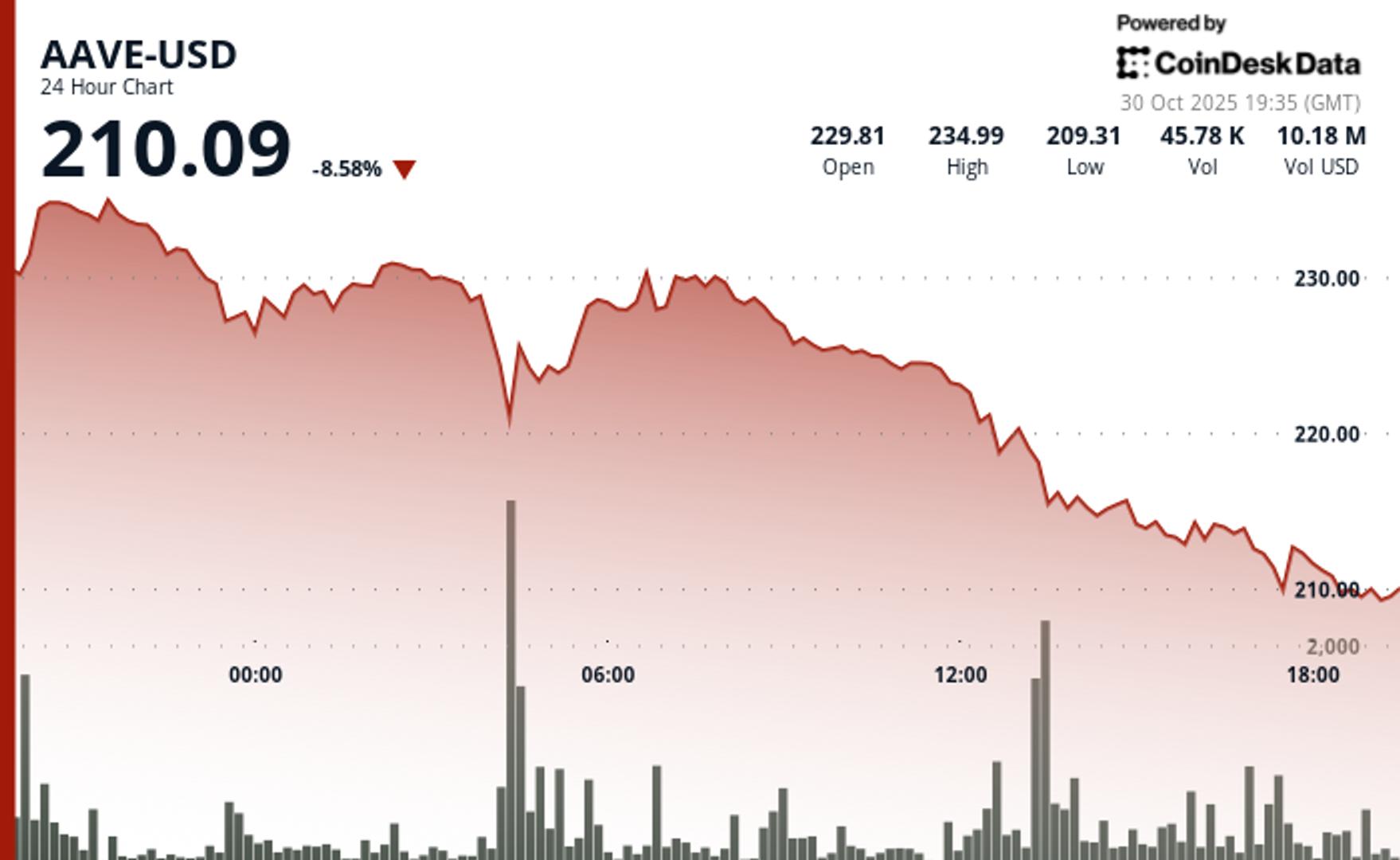 AAVE Drops 8% Amid Crypto Weakness Despite RWA DeFi Momentum
AAVE Drops 8% Amid Crypto Weakness Despite RWA DeFi MomentumThe lending protocol's token showed weakness as technical support crumbled, plunging below $210.
 Crypto Market Structure Bill: Senate Sources Indicate Draft Release As Soon As Tomorrow
Crypto Market Structure Bill: Senate Sources Indicate Draft Release As Soon As TomorrowAccording to crypto reporter Eleanor Terret and market expert MartyParty on social media platform X, the Senate Committee on Agriculture is nearing the release of its much-anticipated bipartisan draft related to the commodities aspect of the crypto market structure bill. Bipartisan Backing And Upcoming Crypto Bill Rollout Terret mentioned that some insiders suggest the committee might move forward as early as tomorrow, while others believe final adjustments could delay the rollout until next week. Regardless of the exact timing, this imminent announcement, coupled with the resumption of bipartisan negotiations within the Senate Banking Committee, indicates that progress is being made after a period of inactivity. MartyParty echoed these sentiments, stating that multiple sources are pointing to a potential release on October 31, 2025. This development is seen as a significant step forward after weeks of silence, aligning with renewed bipartisan discussions following recent industry roundtables. The Senate Agriculture Committee’s focus on the Commodity Futures Trading Commission (CFTC) is essential for this legislation. If the anticipated bill passes, it could lead to the classification of “digital commodities” and expand CFTC oversight over spot markets and derivatives. Additionally, it aims to introduce anti-manipulation measures and establish safeguards for decentralized finance (DeFi), stablecoins, and illicit finance, all while fostering innovation in the sector. Coinbase CEO Highlights Productive Talks In a recent CNBC interview, Coinbase CEO Brian Armstrong highlighted the productive nature of meetings with both Democratic and Republican lawmakers, expressing optimism about the level of cooperation. He stated, “We had great meetings with Democrats and Republicans today. There’s strong bipartisan support to get this market legislation done. It’s important for America and for the 15 million Americans involved in crypto.” Featured image from DALL-E, chart from TradingView.com
 Nigerian fintech plans African stablecoin payment system with Polygon: Report
Nigerian fintech plans African stablecoin payment system with Polygon: ReportFlutterwave partners with Polygon Labs to launch a stablecoin-powered cross-border payments network spanning 34 countries across Africa.
 Mastercard Eyes $2B Zerohash Deal To Expand Crypto Clout
Mastercard Eyes $2B Zerohash Deal To Expand Crypto CloutMastercard, as part of its crypto expansion strategy, is close to acquiring the crypto tech company, Zerohash for roughly $1.5 to $2 billion. For the uninitiated, Zerohash, founded in 2017 and based out of Chicago, provides backend support that lets fintechs and other financial institutions add crypto, stablecoin and tokenization features on to their platforms via APIs. The backend solution package also includes custody, conversions and payouts. According to a 29 October report by Fortune, if Mastercard manages to bring Zerohash in-house, its tools will help the financial giant strengthen its role in handling stablecoins and other blockchain-based payments. Moreover, it can better control how money moves across its network, especially as banks and payment firms explore 24/7 digital transactions. According to Fortune, Mastercard is in talks to acquire crypto infrastructure startup Zerohash for between $1.5 billion and $2 billion. Zerohash builds stablecoin and crypto trading infrastructure, including tokenization APIs and other services for institutional clients. If… — Wu Blockchain (@WuBlockchain) October 29, 2025 If the deal goes through, it would be Mastercard’s biggest move in crypto yet and a nod to how major financial companies are turning to blockchain for faster international transfers at lower costs. It has already tested services that let people convert crypto into traditional fiat currency at checkout. However, the competition is heating up. Stripe bought a similar company called Bridge earlier this year for $1.1 billion. Meanwhile Coinbase is in talks to acquire BVNK, a London-based crypto firm. EXPLORE: Top 20 Crypto to Buy in 2025 Mastercard Looks To Fasttrack Stablecoin Payments With Zerohash Deal Mastercard is looking forward to speed up how stablecoins move between businesses and marketplaces. With this acquisition, Mastercard could in the near future offer faster, programmable payouts that work around the clock, mimicking crypto. With the rise in demand for 24/7 transaction support, banks these days are experimenting with new ways to move money using blockchain, and this is where companies like Zerohash come in. These firms act as bridges between regular bank accounts and crypto systems that help businesses connect without having to build an entirely new payment setup. ZBCN Partnerships Explained Visa , Mastercard , Ripple + payroll giants moving $100B+ yearly are now in play. With $35M backing, Zebec is building the operating system for money. $ZBCN pic.twitter.com/mx1jin2xUK — Crypto Chrome (@Crypto_Chrome_) September 17, 2025 Zerohash has backings from major financial investors and offers plug and play crypto tools for regulated companies. Businesses can use these tools to add crypto features, including sending and receiving stablecoins without handling the coins themselves. Moreover, with Mastercard adding Zerohash, it will become much easier for fintechs and merchants to start using crypto. As it is, stablecoins have become popular for payrolls, supplier payments and managing cash, since they settle instantly and offer clear records. But the system is still messy. There are different blockchains with different rules and ways to convert crypto back to cash, which needs a more streamlined and structured approach. Players like Mastercard are trying to clean up this mess by building unified systems. EXPLORE: Best New Cryptocurrencies to Invest in 2025 Beyond Zerohash: Mastercard’s Steady Crypto Expansion Since last year, Mastercard has been following a multi-layered blockchain strategy. Central to this strategy is its Multi-Token Network (MTN), a blockchain-based infrastructure that is designed to support tokenized assets, stablecoins and CBDCs. In June this year Mastercard partnered with JPMorgan to link its MTN with Kinexys, JPMorgan’s blockchain settlement platform. We’re introducing Mastercard Multi-Token Network to make transactions within this ecosystem secure, scalable and interoperable as part of our commitment to support the wider #digital asset industry. https://t.co/Vb1JtnSTjx#blockchain pic.twitter.com/MwkkxbyAuk — Mastercard News (@MastercardNews) June 29, 2023 Moreover, for regular customers, Mastercard has launched crypto debit cards with companies like Binance and BitPay. These cards let people spend crypto just like cash, and the money is converted to local currency at checkout. It also partnered with Chainlink to help over 3 billion cardholders buy crypto directly using secure blockchain connections. EXPLORE: Next 1000X Crypto – Here’s 10+ Crypto Tokens That Can Hit 1000x This Year Key Takeaways Mastercard is expanding its crypto infrastructure with Zerohash acquisition, API tool integrations for 24/7 payment transactions Mastercard’s acquisition could streamline crypto integration for fintechs already using its network The company is partnering with firms like Chainlink and JPMorgan to build interoperable crypto rails The post Mastercard Eyes $2B Zerohash Deal To Expand Crypto Clout appeared first on 99Bitcoins.
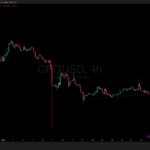 Cronos Smarturn Upgrade Explained: Is CRO Price Set to Skyrocket?
Cronos Smarturn Upgrade Explained: Is CRO Price Set to Skyrocket?The much-anticipated Cronos Smarturn upgrade went live today, but the excitement was overshadowed by broader market volatility as the CRO price took a deep dive. Following the U.S. Federal Reserve’s 0.25bps rate cut on October 29, the crypto market turned red, with Bitcoin sliding below $110,000 and total market cap dipping about -2%. Historically, markets often correct after FOMC meetings before resuming their trend — and this time was no exception. Still, the broader outlook remains positive, with BTC holding above $105,000. $BTC liquidates and flush longs before the uptrend. Is this time different? pic.twitter.com/JV3TB0PXns — Crypto Seth (@seth_fin) October 30, 2025 That being said, Cronos was not spared. CRO price slipped 4.45% in the past 24 hours, closely tracking Bitcoin’s -3.6% and Ethereum’s -5%. Despite optimism surrounding the upcoming Smarturn upgrade, short-term pressure remains, with CRO trading near $0.143, down over 22% in the past month. With a key network milestone arriving amid macroeconomic uncertainty, traders now wonder: Can the Smarturn upgrade revive CRO’s rally, or will the bears stay in control? EXPLORE: 10+ Next Crypto to 100X In 2025 Macro Pressure: FED Rate Cut Triggers Crypto Selloff – Cronos Faces Resistance Amid Bearish Setup The FED’s 0.25bps rate cut initially triggered a wave of selling across crypto markets, and CRO price followed suit. On the 4-hour chart, the token is testing a key ascending support line near $0.142–$0.145, a level that has held since mid-October. (Source: Coingecko) If buyers fail to defend this area, the next stop could be $0.13, mirroring the September lows. The Relative Strength Index (RSI) hovers near 40, signaling fading momentum, while the MACD shows only mild bullish divergence — suggesting sellers still have the upper hand. DISCOVER: 16+ New and Upcoming Binance Listings in 2025 On the daily timeframe, CRO trades within a broad consolidation range between $0.118 support and $0.165 resistance. A decisive close above $0.165 would mark a short-term reversal, while slipping below $0.142 could confirm a deeper correction toward the $0.12 zone. EXPLORE: What is WET Token? Solana’s HumidiFi DEX to ICO in November – Next 100X Crypto? Technical Milestone for the Cronos Network – AI Expansion and ETF Potential Despite the bearish technicals, Cronos is taking a major step forward with today’s Smarturn mainnet upgrade, scheduled for block height 38,432,212 (around 7 A.M. GMT). The event introduces upgrades across the Ethereum Virtual Machine (EVM), IBC interoperability, smart accounts, and new opcodes, all aimed at improving scalability and developer performance. Users may experience a brief network downtime of up to one hour as validators finalize the transition. Once completed, Cronos aims for 30,000 transactions per second with 0.5-second block times, supporting faster DeFi and AI-driven applications. Beyond Smarturn, Cronos is also expanding its AI Agent SDK, allowing developers to create semi-autonomous on-chain agents for trading, cross-chain communication, and liquidity management — reinforcing Cronos’ ambition to become a hub for AI-powered blockchain ecosystems. Another potential long-term catalyst is ETF exposure. The Trump Media Crypto Blue Chip ETF is expected to allocate 5% to CRO, while Canary Capital’s staked CRO ETF awaits SEC review. Either approval could inject billions in institutional inflows, significantly boosting the CRO price and liquidity across the Cronos ecosystem. Do you believe $CRO will go past $1? There’s too much utility behind it.#CRO will be one of the biggest Blockchains in the world pic.twitter.com/9xjgEZ0MzL — Colin Chasmar Ⓥ (@CronosChaz) October 27, 2025 CRO Price Outlook: Consolidation Before Recovery? In the near term, CRO price remains at a critical support zone around $0.143. A rebound from this level could lift the token toward $0.16–$0.165, while a clean break above this resistance would confirm a potential move toward $0.21. Conversely, losing support could open the door for another test near $0.12. Despite the volatility, Cronos’ fundamentals remain strong. The network holds over $535 million in total value locked (TVL) and continues to expand its DeFi and AI integrations with partners like AWS and Google Cloud. If the Smarturn upgrade delivers improved performance and the broader market stabilizes, CRO price could see renewed momentum into late Q4 2025. EXPLORE: 9+ Best High-Risk, High-Reward Crypto to Buy in 2025 The post Cronos Smarturn Upgrade Explained: Is CRO Price Set to Skyrocket? appeared first on 99Bitcoins.
- Beyond Listing: Why Exchanges Must Become Ecosystem Partners
Last month, a founder of a privacy infrastructure project reached out to me. His team had spent eight months and over $400,000 trying to secure listings on major exchanges. The project had legitimate technology, strong audits, and real utility. Yet every conversation with exchanges came down to the same question: how much can you pay? This is the moment we find ourselves in. The crypto industry has evolved from the wild west of 2020 to the compliance-heavy landscape of 2025, but we still haven’t solved the fundamental problem. Most exchanges treat token listings as transactions rather than partnerships. Projects pay substantial fees, get listed, and then largely fend for themselves. When 89% of exchange-listed tokens crash after short-lived price spikes, that failure belongs to all of us. From Gatekeeping to Partnership The listing landscape has transformed dramatically over the past five years. We moved from basic technical compatibility checks to comprehensive KYC/AML requirements, external audits, and mandatory compliance with regulations like MiCA in Europe. This evolution was necessary and overdue. But compliance alone hasn’t created healthier markets. The reality is that many projects with real utility and strong technical foundations struggle to gain traction while speculative tokens capture headlines and trading volume. The industry has become focused on short-term narratives rather than long-term value creation. The most successful exchange partnerships prove what’s possible when commitment extends beyond the listing event. Binance’s support for Polygon included comprehensive marketing, global AMAs, liquidity incentives, and staking promotions. The result was millions of new users and deep liquidity from day one, establishing a template for Layer-2 ecosystem growth. That’s the standard we should be building toward. How Phemex Approaches Listings At Phemex, I’ve built our listing philosophy around a simple conviction: our success depends on supporting projects that create real value over time. This isn’t altruism. It’s recognition that healthy ecosystems generate sustainable business. We start with transparency. Projects can apply through our straightforward application process with feedback provided within seven business days. But what makes our approach different is community involvement. We maintain a public suggestion form where traders can recommend tokens. We periodically review these suggestions and notify users when their recommendations result in listings. This matters more than it might seem. Traders using our platform have valuable insights about which projects deserve attention. By incorporating their input, we ensure listings reflect genuine market interest rather than just financial arrangements. We prioritize projects with strong, growing communities that actively support their tokens and amplify their reach. It’s one of the ways we compete on quality rather than volume. Once we list a project, the relationship deepens rather than ends. We provide ongoing support through joint marketing initiatives, launchpool opportunities, AMAs with our community, and coordinated promotions across our social channels. We continuously evaluate performance through our Special Treatment mechanism. Assets flagged with elevated risk receive additional scrutiny. We can delist tokens that fail to meet ongoing standards of compliance, liquidity, or activity. Clear public announcements and phased support for withdrawals ensure users stay protected throughout the process. Our recent listing of Orochi Network exemplifies our focus on technical innovation. ON token represents a Verifiable Data Infrastructure platform utilizing Zero-Knowledge Proofs and Fully Homomorphic Encryption. The project focuses on data integrity and privacy with real technical utility. But we also recognize that value comes in different forms. We list community-led projects and meme tokens that may not fit traditional utility descriptions but have strong, engaged communities driving genuine adoption. These projects serve real demand in the market and deserve access to quality infrastructure and support. I don’t measure our listing team’s success by how many tokens we onboard each quarter. I measure it by how many of those projects, whether utility-focused or community-driven, are still building, still growing, and still serving their users two years later. That metric changes everything about how you evaluate opportunities. What the Industry Needs When I talk to other exchange leaders, I challenge them on a simple question: are you selecting projects you genuinely believe will matter in three to five years, or are you optimizing for short-term trading fees? The exchanges that thrive in the coming years won’t be those with the most listings or the highest volumes. They’ll be the ones that support real builders, maintain rigorous standards, and foster genuine innovation. They’ll compete on the strength of their ecosystems, not the size of their listing fees. This shift requires three things from exchanges: First, genuine transparency in evaluation. Projects and founders deserve to understand what actually drives listing decisions. Hidden fees and opaque processes benefit no one except those gaming the system. Second, support that extends beyond the listing announcement. Co-marketing, liquidity programs, and educational initiatives should be standard, not exceptions. Third, ongoing accountability. Listing isn’t the end of due diligence. It’s the beginning of a partnership where both sides have responsibilities to users and to the broader ecosystem. At Phemex, we’re committed to this approach. We’re building relationships with projects that create real value, whether through technical innovation or strong community engagement, not just those that generate short-term volume. We’re providing transparency in our evaluation and ongoing support after listing. We’re treating our role as curators and partners, not just liquidity providers. The founder I mentioned at the start eventually listed with us. His project is growing steadily, building real adoption, and creating genuine value for users. That’s the kind of success story that builds sustainable markets. Token listings have evolved. It’s time exchanges evolve with them. The post Beyond Listing: Why Exchanges Must Become Ecosystem Partners appeared first on BeInCrypto.
 Tron: Despite bearish October, TRX’s rebound could be underway again
Tron: Despite bearish October, TRX’s rebound could be underway againTron's fundamentals could be a key catalyst for the asset's rally.
 Avalon picks BNB Chain for its AI-driven RWA marketplace
Avalon picks BNB Chain for its AI-driven RWA marketplaceAvalon Labs has selected the BNB Chain for the exclusive initial launch of its integrated platform. The chain will host the first live deployment of its AI-model marketplace and Commercial Rights Tokenization standard. In an announcement on Oct. 30, Avalon…
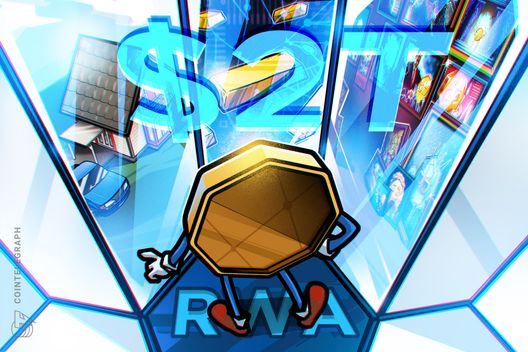 Standard Chartered sees $2T in tokenized RWAs by 2028, matching stablecoins
Standard Chartered sees $2T in tokenized RWAs by 2028, matching stablecoinsThe $300 billion stablecoin market capitalization pushed DeFi into a “self-sustaining cycle” of growth, according to the investment bank’s head of research.
 JPMorgan bets on tokenization as Kinexys brings private equity onchain
JPMorgan bets on tokenization as Kinexys brings private equity onchainJPMorgan is moving forward with the launch of its fund tokenization platform, Kinexys Fund Flow, with the rollout planned for 2026.
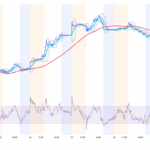 Coinbase Earnings Call: Base Chain May Finally Get New Token and Wall Street Is Paying Attention
Coinbase Earnings Call: Base Chain May Finally Get New Token and Wall Street Is Paying AttentionWith the latest Coinbase earnings expected later today, the crypto exchange’s Base token has caught fire. The Ethereum Layer-2 that started as a technical curiosity is now one of crypto’s hypest chains that’s fast, cheap, and impossible to ignore. But there’s a catch: it still doesn’t have a token. Rumors say that’s about to change, and if true, it won’t just redefine Base but rewrite the rules of how major exchanges interact with their own blockchains. DISCOVER: Next 1000X Crypto: 10+ Crypto Tokens That Can Hit 1000x in 2025 Coinbase Earnings Point to Hype? More Signs For Possible Base Token Launch (Source: COIN) After months of silence, Base’s official X account hinted in September that the network is “exploring a token.” Jesse Pollak, who leads the project, confirmed that discussions are underway, though no final decision has been made. That was enough to ignite a wave of airdrop speculation, reminiscent of Arbitrum’s token debut. “We continue to explore the idea of a Base network token,” Pollak told users. (Source: X) Unlike other Layer-2s that launched with immediate token incentives, Coinbase prioritized stability and regulatory compliance first. Now, with Base processing millions of weekly transactions and hosting major apps like Friend.tech and Aerodrome, the groundwork is clearly set for a broader rollout. DISCOVER: 20+ Next Crypto to Explode in 2025 Wall Street Sees a $34 Billion Catalyst in Coinbase If Coinbase really decides to launch a Base token, it’ll be walking a tightrope. The SEC is watching and one wrong move could drag the company back into regulatory hell. But who knows? Trump is the crypto president, after all. 99Bitcoins analysts think the safest route would be a hybrid token, part utility, part governance, a way to pay gas, stake, and participate in validation without waving a red flag at Washington. (Source: DefiLlama) Speculators are already treating Base like the next big airdrop. They’re minting NFTs, chasing yield, and flooding DeFi apps in a frenzy reminiscent of 2021. Total value locked has blown past $5.2 Bn, per DeFi Llama. Whether it’s conviction or blind hope, the money’s pouring in. In a recent note, J.P. Morgan analysts called a Base token launch a “major performance driver” for Coinbase’s stock. They estimate it could unlock up to $34 Bn in equity value by monetizing Base’s network activity and creating a new on-chain economy tied directly to Coinbase’s brand. “A Base token could help Coinbase capitalize on stablecoin demand and reduce platform risk exposure,” J.P. Morgan’s report stated, raising its 2026 price target on COIN from $342 to $404. The Bottom Line Coinbase has done what few in crypto ever manage and waited. It built the rails first, kept quiet about the token, and let the hype grow on its own. Now that patience looks ready to cash out. Even without an airdrop, the idea of a Base token has become one of the most-watched storylines in the market. If Coinbase pulls it off, it could be the biggest flip in crypto history. EXPLORE: XRP Price Jumps 11% After SEC Crypto Unit Tease XRP ETF Progress Key Takeaways With the latest Coinbase earnings expected later today, the crypto exchange’s Base token has caught fire. The Ethereum Layer-2 is back. In a recent note, J.P. Morgan analysts called a Base token launch a “major performance driver” for Coinbase’s stock. The post Coinbase Earnings Call: Base Chain May Finally Get New Token and Wall Street Is Paying Attention appeared first on 99Bitcoins.
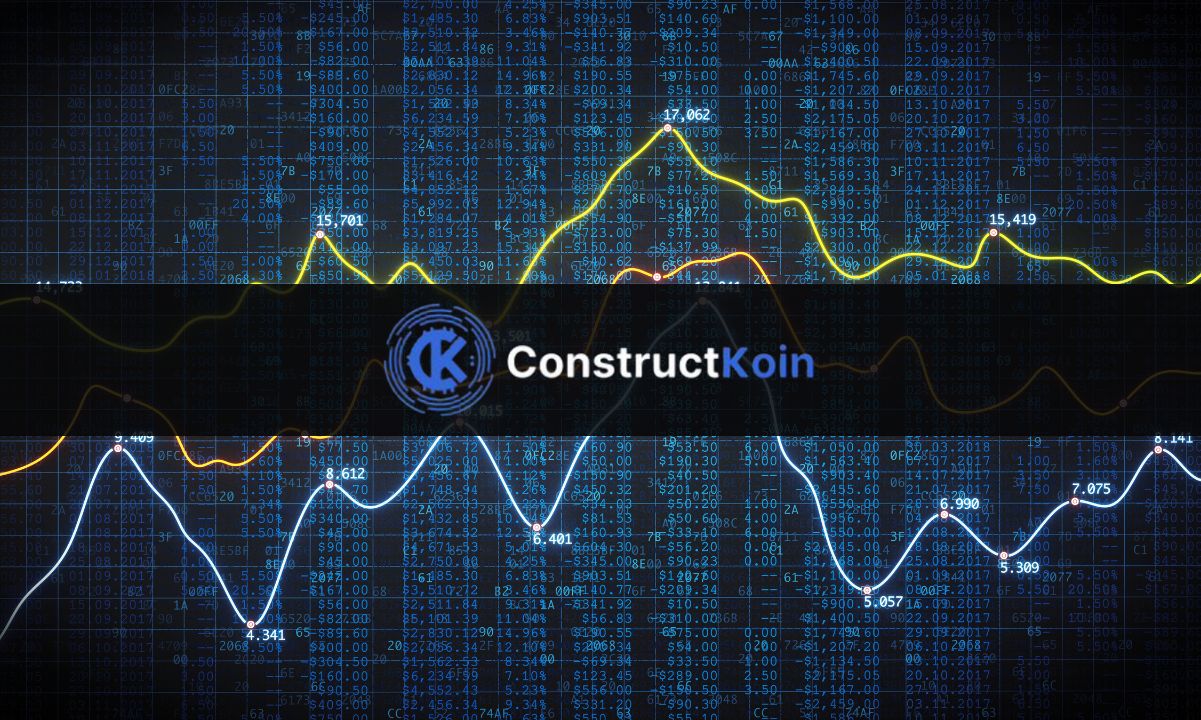 Solana (SOL), Official Trump (TRUMP), and Construct Koin (CTK): Price Outlook for This Crypto Major, Crypto Memecoin and RWA Presale
Solana (SOL), Official Trump (TRUMP), and Construct Koin (CTK): Price Outlook for This Crypto Major, Crypto Memecoin and RWA PresaleThe 2025 bull cycle is in full swing, with Layer-1 giants, political memecoins, and real-world asset (RWA) protocols carving out distinct lanes and each delivering outsized gains. While all three sectors have produced their share of winners, the spoils of war are not evenly distributed – which is why it’s imperative to do your research and pick the candidates that have the best prospects of running higher through Q4 and into 2026. When it comes to crypto majors, Solana (SOL) is the obvious pick, not least because its price has been sluggish versus that of BTC and ETH lately, yet its network metrics have been outperforming those of other smart contracts chains. It’s underpriced, in other words, and has some catching up to do. Elsewhere, Official Trump (TRUMP) has been enjoying a bumper week, up 42% in 7 days, with its fortunes correlated with the performance of the maverick President whose name it bears. And then we have Construct Koin (CTK), the presale RWA asset that’s been generating a lot of hype for many reasons: while unproven at this stage, its chances of going the distance while earning early investors serious returns appear strong, according to some analysts. Let’s consider the bull case for each in turn. SOL Looks to Finish 2025 on a Roll Solana has reclaimed its throne as the high-throughput king of chains, with this capacity poised to be doubled soon once the Firedancer client is implemented. This breakthrough will allow everyone from DeFi users to trench hunters to cram even more transactions into every block while enabling Solana to gain ground on newer smart contract networks such as Sui. Trading at $195 on October 30, 2025, Solana’s three-month price outlook has it climbing to $222, which seems a conservative estimate but a reasonable baseline for projecting where SOL goes from here. It’s worth noting that as SOL rises, major assets within its ecosystem, from JUP to PUMP, are likely to rise higher still, making these ecosystem assets essentially leveraged bets on Solana. If you’re bullish on SOL, in other words, you should also at least consider the bullish argument for the leading assets that account for much of its trading volume. TRUMP Memecoin Mania Meets Political Alpha You can’t keep a good memecoin down – especially when it’s one that has the blessing of the U.S. President. While ostensibly a memecoin, a simpler way of looking at Official Trump (TRUMP) is as stock in Donald Trump himself. If the President has a good week – securing trade deals with China, say, or negotiating peace in the Middle East – expect the token bearing his name to follow suit. This isn’t mere projection, either: it’s exactly how TRUMP is performing in real-time, rallying every time the President demonstrates his Midas touch. He may be a polarizing figure, but the U.S. Prez takes care of business, and when he does, the TRUMP memecoin follows suit. Whales scooped 5% of the supply last week after Trump tweeted support for crypto-first policies, sparking a 45% intraday pump. Therefore, if meme coins are your thing, keeping TRUMP in your watchlist is probably not a bad idea. Construct Koin (CTK) Presale Takes Off While SOL powers the base layer and TRUMP captures narrative froth, Construct Koin (CTK) offers something very different: tangible yield via tokenized real estate loans. Its current presale is filling up fast, with savvy investors recognizing the upside to getting in early to an RWA project that places bricks and mortar on-chain, while also looking to generate wealth for its investors. There are a few interesting things about Construct Koin that distinguish it from other real estate (ReFi) projects out there, not least in terms of how value accrues to the native token. CTK generates returns through a loan book funding the construction of residential property: the more that’s built, the more your portfolio grows. Currently on sale at $0.1 via the presale, many consider there are high chances of serious upside upon DEX listing, and plenty more to come once the project launches its AI-stablecoin indexed to property cash flows. This crypto market cycle still has some ways to run. As veteran traders who remember the last bull market will attest, much of the gains arrive towards the end, when the best assets reach all-time highs. Keeping close tabs on the Solana, Official Trump (TRUMP), and Construct Koin (CTK) could prove to be a good idea. Disclaimer: The above article is sponsored content; it’s written by a third party. CryptoPotato doesn’t endorse or assume responsibility for the content, advertising, products, quality, accuracy, or other materials on this page. Nothing in it should be construed as financial advice. Readers are strongly advised to verify the information independently and carefully before engaging with any company or project mentioned and do their own research. Investing in cryptocurrencies carries a risk of capital loss, and readers are also advised to consult a professional before making any decisions that may or may not be based on the above-sponsored content. Readers are also advised to read CryptoPotato’s full disclaimer. The post Solana (SOL), Official Trump (TRUMP), and Construct Koin (CTK): Price Outlook for This Crypto Major, Crypto Memecoin and RWA Presale appeared first on CryptoPotato.
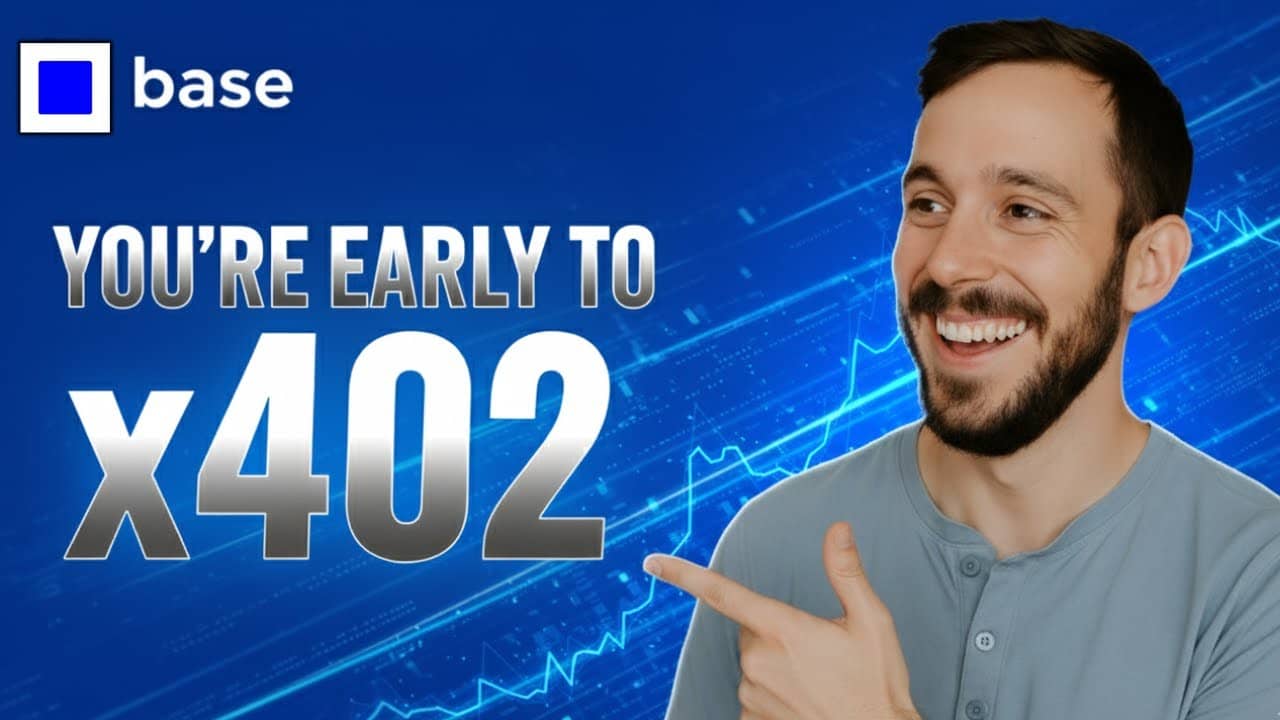 Coinbase’s X402 Agentic Payments Network Will Power Global Economy By 2030
Coinbase’s X402 Agentic Payments Network Will Power Global Economy By 2030Just when you thought stablecoins alone were about to replace legacy payment processors charging ridiculous layered fees, news has emerged that the same Web2 interface can be enhanced to enable faster and cheaper payments. Folks in emerging economies have, for years, been forced to pay a premium when making international payments, but businesses and ordinary users can now breathe a sigh of relief with x402, an effort by Coinbase. Money runs the world, so they said. A June 2025 Grand View Research report forecasts the digital payment solutions market to cross the $361 billion mark by 2030. At this pace, it will grow at a rate of +21.4% CAGR between 2025 and 2030. (Source: Grand View Research) DISCOVER: 9+ Best High-Risk, High-Reward Crypto to Buy in 2025 Will x402 Bring Changes To Payment Processing? If so, will the X402 protocol play a big role in enabling smooth payments? To understand this and determine whether the tech stands a chance, it is essential to know what X402 enhances to qualify as a game changer. For starters, x402 is an initiative backed by Coinbase, the global exchange, that aims to create a web-native payment protocol that enables, among other things, AI agents and dapps to transact using stablecoins on any smart contracts-enabled platform. Ideally, dapps and AI agents using the x402 should run on scalable, low-fee networks, including Base or MegaETH, for example. In this way, all transactions will not only be executed instantaneously but fees will be so low that there will be no impact on the end user. There is no need for logins or KYC. With x402 gaining traction and a perfect scalable blockchain platform, which can be a native mainnet or layer-2, it is easy to see why the protocol, which is open source, can enable agentic commerce. Here, a swarm of AI agents can interlink, enabling autonomous payments for services, data, and more. DISCOVER: 16+ New and Upcoming Binance Listings in 2025 Will x402 Power Global Economy By 2030? And there are signs that this is where everything is headed. Two things are here to stay: Stablecoins and AI. It took years before stablecoins found mainstream adoption and regulatory endorsement. Meanwhile, AI was received with open arms right after the first iteration went live. The explosion of OpenAI and ChatGPT proved how useful this technology is, explaining the multi-billion-dollar investments by titans, including Meta and Microsoft. If convenient, trustless, and open payment is the name of the game going forward, it is easy to see why x402 will be a go-to protocol. A16z Crypto projects that autonomous transactions could cross the $30T mark by 2030. As such, if x402 becomes the choice platform and evolves to be the backbone for AI-to-machine payments, there is little doubt that it would effectively restructure a large portion of the internet’s business model. Trackers show that x402-powered transactions now total over 3.1M, generating over $3.5M in volume. Of this, there are over 162,000 buyers and 30,000 sellers. (Source: x402 Scan) With more adoption, developers will look to enhance the open source protocol. This, in turn, will draw more partners. Founding developers include Cloudflare and Coinbase, but in recent months, the tech has found support from Google. It signals strong tech industry backing as the drive for adoption and standardization grows. DISCOVER: 10+ Next Crypto to 100X In 2025 Coinbase x402 To Power Global Economy By 2030? Coinbase x402 is an open-source protocol x402 finding rapid global adoption AI explosion is fueling more developments of agents Will x402 power the global economy by 2030? The post Coinbase’s X402 Agentic Payments Network Will Power Global Economy By 2030 appeared first on 99Bitcoins.
 JPMorgan is Taking Metamask Public: Will MetaMask ICO Land Before MetaMask Airdrop?
JPMorgan is Taking Metamask Public: Will MetaMask ICO Land Before MetaMask Airdrop?The MetaMask airdrop narrative is heating up again after fresh reports confirmed that JPMorgan and Goldman Sachs have been brought on to lead Consensys’ initial public offering (IPO). Consensys, the company behind the widely popular MetaMask wallet, is reportedly eyeing a late 2025 or early 2026 listing, potentially marking one of the biggest public offerings in crypto’s history. With over 100 million MetaMask users worldwide and persistent chatter around a MetaMask ICO and MASK token, investors are now asking one burning question. Will the airdrop arrive before the IPO, or will both events coincide in a single massive rollout? Market Cap 24h 7d 30d 1y All Time Is JPMorgan Really Taking MetaMask Public? Consensys, led by Ethereum co-founder Joseph Lubin, has hired JPMorgan Chase and Goldman Sachs to manage its IPO. The move signals a significant leap forward for one of Ethereum’s most influential structure firms, fresh off a key regulatory victory. JUST IN: MetaMask maker Consensys selects JPMorgan and Goldman Sachs as lead underwriters for its IPO, per Axios. pic.twitter.com/qxxtn64NoE — Cointelegraph (@Cointelegraph) October 29, 2025 Earlier this year, the SEC dropped its lawsuit against Consensys over MetaMask’s staking features, removing one of the final barriers before a potential listing. The company, last valued at around $7Bn in 2022, builds foundational tools for the Ethereum ecosystem, including MetaMask, Infura, and the Linea Layer-2 network. (Source – tracxn) The IPO would give traditional investors a rare opportunity to buy exposure to Ethereum’s expanding ecosystem. Meanwhile, Consensys has doubled down on its Web3 ambitions, reportedly planning to invest $200M into DeFi and yield-generating strategies on Linea. This will further strengthen MetaMask’s integration with on-chain finance. DISCOVER: 10+ Next Crypto to 100X In 2025 Will a MetaMask ICO Launch Before the MetaMask Airdrop? So far, there’s no official MetaMask ICO, and none confirmed to be coming. Despite years of speculation about a MASK token, Consensys has not announced any sale or token issuance. Instead, attention has shifted toward the ongoing MetaMask Rewards Program, which many believe is laying the groundwork for a future airdrop. Getting started with MetaMask Rewards is easy. Just opt-in on mobile and you're on your way. pic.twitter.com/wWbJjhBkSO — MetaMask.eth (@MetaMask) October 29, 2025 This reward campaign allows users to earn points for actions such as swapping tokens, bridging assets, and staking directly in MetaMask. The points system has quickly become a talking point among DeFi users, offering rewards such as Linea tokens, fee discounts, and potential eligibility for a MASK airdrop. While a few domain names, such as claim.metamask.io and gift.metamask.io, have intensified community speculation, Consensys hasn’t confirmed any official airdrop timeline or token details. Analysts expect that if a MASK token does appear, it will take the form of a governance or utility token, launched via a fair distribution rather than a traditional ICO – aligning with the company’s cautious, regulation-first approach. DISCOVER: 15+ Upcoming Coinbase Listings to Watch in 2025 When Could the MetaMask Airdrop or Token Launch? If the MASK token does launch, it could become one of the most anticipated events in DeFi history. MetaMask’s 10 million unique user base gives it unprecedented reach, and a token release (especially alongside ConsenSys’ IPO) could ignite a wave of retail participation. (Source – dune) Recent patterns suggest the MetaMask airdrop could take place in early 2026, potentially coinciding with the IPO itself. The dual headlines would be strategic: one introduces Consensys to Wall Street, while the other energizes the Web3 community with a fresh token ecosystem. Analysts expect that if a MASK token hits the market, Metamask price volatility could mirror early UNI or ARB surges, as users rush to claim, stake, and trade their rewards. DISCOVER: 16+ New and Upcoming Binance Listings in 2025 Join The 99Bitcoins News Discord Here For The Latest Market Updates Key Takeaways JPMorgan and Goldman Sachs to lead Consensys IPO. Is the MetaMask token going to launch before the airdrop? The post JPMorgan is Taking Metamask Public: Will MetaMask ICO Land Before MetaMask Airdrop? appeared first on 99Bitcoins.
 Securitize partners with BNY Mellon launch tokenized fund backed by AAA-rated credit
Securitize partners with BNY Mellon launch tokenized fund backed by AAA-rated creditSecuritize has partnered with BNY Mellon to launch a tokenized fund offering onchain exposure to AAA-rated collateralized loan obligations. Securitize, a leading RWA tokenization platform, has announced the launch of a tokenized fund that provides onchain exposure to AAA-rated collateralized…
 Whale.io Confirms First Airdrop for Crock Dentist NFT Holders
Whale.io Confirms First Airdrop for Crock Dentist NFT Holders[PRESS RELEASE – Willemstad, Curaçao, October 29th, 2025] Whale.io has announced that the first airdrop for Crock Dentist NFT holders is scheduled for this weekend, following strong early performance of the recently launched Whale Originals title. The limited collection of 1,000 Crock Dentist NFTs has already seen significant adoption, with more than 300 unique holders. Early secondary market activity is underway on Magic Eden, where the first NFTs have been listed, bought, and sold, establishing initial pricing and liquidity for the collection. Real-Time Stats and Airdrop Projections Whale.io has rolled out live game statistics for Crock Dentist, offering full transparency into key performance indicators. The dashboard, accessible directly on the platform, displays real-time turnover, wager volume, and player activity. This data confirms the game has generated over $250,000 in turnover since launch. The game’s 98% Return to Player (RTP) structure allocates the 2% house edge entirely to fund airdrops for NFT holders. Based on current metrics, Whale.io estimates the first airdrop will exceed $5,000 in $WHALE tokens. With each NFT entitled to 0.1% of the total distribution. Users who have not yet minted will miss the upcoming airdrop. Minting remains open on Whale.io, but with supply capped at 1,000 and over 30% already claimed, availability is limited. Social Campaigns Offer Free NFT Entry To broaden access, Whale.io has launched targeted social campaigns on X (@WhaleGames_en), where users can win Crock Dentist NFTs through engagement activities such as retweets, game-related quizzes, and community challenges. The $WHALE token powers multiple functions within the ecosystem, including gameplay, battle pass purchases, and staking. Following TGE, expanded utilities will further integrate the token across Whale.io’s offerings. About Whale.io Whale.io is an online casino and sportsbook platform specializing in proprietary Whale Originals games and transparent, blockchain-based reward systems. The platform combines traditional gaming entertainment with community-owned value through NFTs and native tokenomics. Discover the future of Whale.io Casino and Whale Token by checking them out here: Website: https://whale.io/nft Socials: https://linktr.ee/whalesocials_tg The post Whale.io Confirms First Airdrop for Crock Dentist NFT Holders appeared first on CryptoPotato.
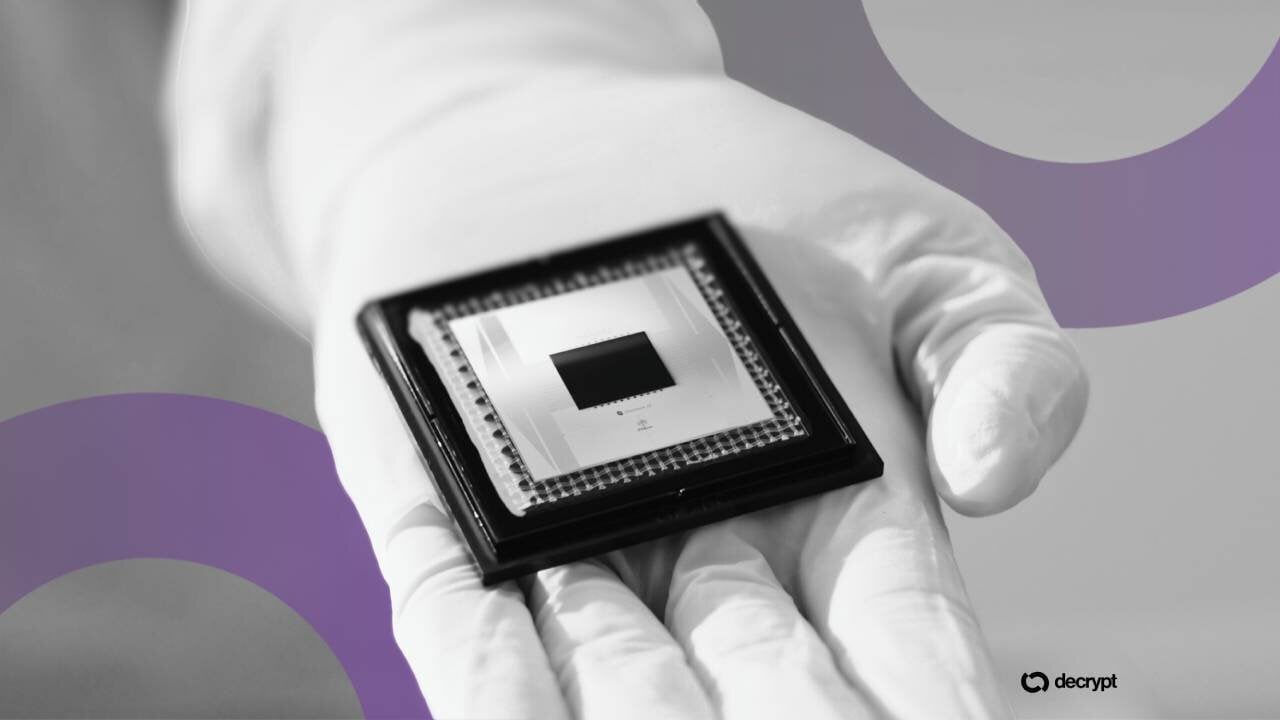 IBM’s Quantum ‘Cat’ Roars: 120-Qubit Breakthrough Pushes Bitcoin’s Encryption Risk Closer
IBM’s Quantum ‘Cat’ Roars: 120-Qubit Breakthrough Pushes Bitcoin’s Encryption Risk CloserIBM’s new 120-qubit experiment marks a leap forward, advancing technology that could one day crack Bitcoin’s encryption.
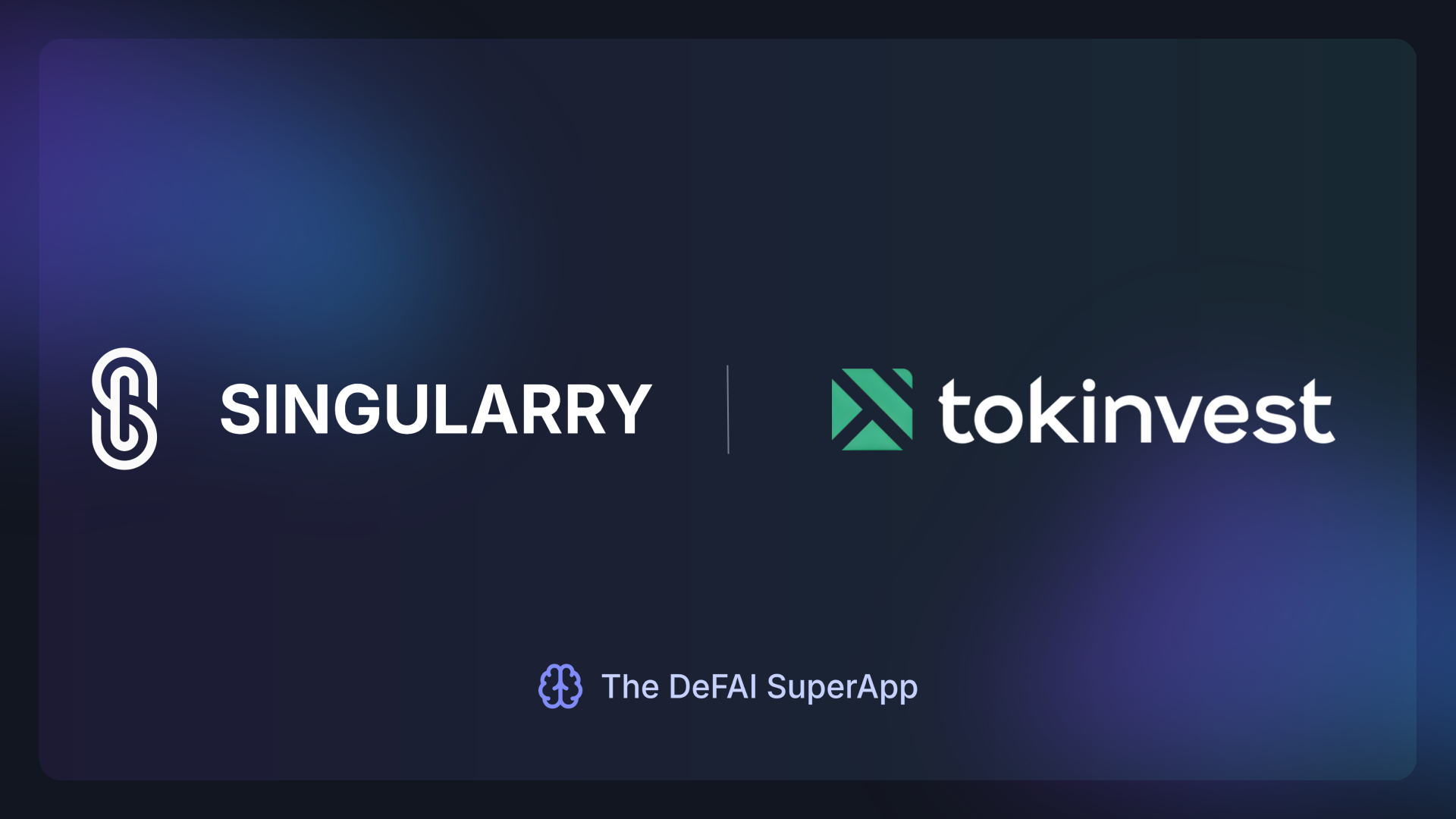 Tokinvest and Singularry SuperApp Partner to Make Regulated Real-World Asset Investing Accessible to Everyone
Tokinvest and Singularry SuperApp Partner to Make Regulated Real-World Asset Investing Accessible to Everyone[PRESS RELEASE – Dubai, UAE, October 29th, 2025] Tokinvest, a VARA-licensed platform for tokenised real-world assets (RWAs), has announced a partnership with Singularry SuperApp, a UAE-based fintech that blends artificial intelligence (AI) with decentralised finance (DeFi) to make digital investing more human-centric and straightforward. Through the partnership, Tokinvest’s regulated investment infrastructure will be integrated directly into the Singularry SuperApp. This will give users secure access to suitable tokenised real-world assets from the app’s all-in-one financial interface. Tokinvest is progressing regulatory approval for a range of tokenised products, including real estate, commodities and private credit products. The collaboration combines Tokinvest’s strength in regulation and compliance with Singularry’s vision to create the “iPhone moment for Web3.” The result is a new way for users to explore digital assets and real-world investments without needing technical knowledge of blockchain or wallets. Scott Thiel, CEO and Co-Founder of Tokinvest, said: “Having spent more than a decade in Greater China watching the rise of Web2 superapps like WeChat and Alipay, I’ve seen firsthand how technology can transform how people interact with finance. This collaboration with Singularry SuperApp feels like the next evolution: the Web3 version of that story. “Our infrastructure does the heavy lifting on compliance and custody, so users don’t have to think about blockchain or wallets; they can just invest. It’s another step towards making tokenisation a normal part of how people build wealth, not a niche for early adopters.” Singularry SuperApp is a next-generation financial technology platform that combines AI with decentralised finance to make Web3 more accessible. The app helps users manage digital assets, earn yield, and invest across multiple blockchains all through one smart, human-centric interface. By integrating Tokinvest, Singularry users will soon be able to explore and invest in regulated, tokenised real-world assets alongside their crypto holdings. Both companies will work together on interoperability, compliance oversight, and education to ensure a safe and seamless user experience. Danny Cooper, BD & Operations manager, added: “Tokinvest brings exactly the kind of regulated infrastructure we’d been looking for, a credible team, licensed infrastructure and a trusted partner ready to deliver real-world assets at scale. Integrating their RWA platform allows us to connect our DeFi and AI technology with fully compliant, globally accessible investments, expanding what’s possible for our users.” The collaboration will include: Full integration of Tokinvest’s RWA platform into the SuperApp. A joint steering committee to oversee security, compliance, and user experience. Co-branded marketing and educational campaigns to promote responsible investing and financial inclusion. In September 2025, Tokinvest announced three major milestones that solidified its position as a leader in regulated digital assets: receiving Dubai VARA’s first multi-asset issuance licence, completing the first-ever tokenised racehorse on Polygon in partnership with Evolution Stables, and closing a US$3.2 million pre-seed round backed by Triliv Holdings, Exponential Science, and other investors. Together, these achievements highlight Tokinvest’s momentum in widening investor access to high-value, previously exclusive asset classes. For more information and to join the Tokinvest Marketplace for access to the next drop, users can visit: https://portal.tokinvest.capital/auth/sign-up About Tokinvest Tokinvest is a regulated, pioneering platform that connects real-world asset issuers with investors globally. Our advanced platform simplifies the investment process by creating virtual tokens representing rights to assets and providing comprehensive lifecycle services from ideation to trading to asset servicing. Headquartered in Dubai, we leverage the region’s robust regulatory environment to offer all investors access to the most desirable assets. About Singularry SuperApp Singularry SuperApp is a next-generation financial technology platform that unifies artificial intelligence, decentralized finance (DeFi), and cross-protocol interoperability within a single intelligent ecosystem. Its AI systems deliver human-level market analysis, adaptive risk management and automated on-chain execution, empowering users to invest, earn, and transact seamlessly across traditional finance and DeFi, redefining how people engage with the digital economy. The app is built on BNB Chain and powered by its native $SINGULARRY token. The post Tokinvest and Singularry SuperApp Partner to Make Regulated Real-World Asset Investing Accessible to Everyone appeared first on CryptoPotato.
 Ondo Finance Urges SEC to Delay Nasdaq Tokenization Plan Over Transparency Concerns
Ondo Finance Urges SEC to Delay Nasdaq Tokenization Plan Over Transparency ConcernsOndo Finance has published an open letter to the U.S. Securities and Exchange Commission (SEC) asking it to delay approval of Nasdaq’s plan to trade tokenized securities until more details are revealed.The team behind the decentralized finance protocol, which has $1.7 billion in total value locked (TVL), said Nasdaq’s proposal depends on the Depository Trust Company (DTC) figuring out a new system for tokenized settlement – information that has not yet been made public.If approved, Nasdaq’s proposal (filed on Sept. 8) would mark the first time tokenized securities are listed on a major U.S. exchange. However, Ondo warned that moving forward without transparency could give larger financial institutions an unfair edge or make it harder for newer firms to compete. To continue reading this as well as other DeFi and Web3 news, visit us at thedefiant.io
 Alibaba Subsidiary Drives Attention to its Ethereum Layer 2 Blockchain
Alibaba Subsidiary Drives Attention to its Ethereum Layer 2 BlockchainJovay Network, an Ethereum Layer 2 (L2) network backed by Ant Digital, a subsidiary of Alibaba, is catching eyes today after it proclaimed its alignment with Ethereum on social media.Despite many investors being surprised by the news, Jovay was originally revealed as an Ethereum L2 in April at the RWA Real Up conference in Dubai. Jovay touts itself as financial-grade blockchain infrastructure, focused on global real-world asset (RWA) tokenization via its “modular Layer2 infrastructure that bridges Web2 and Web3.”To continue reading this as well as other DeFi and Web3 news, visit us at thedefiant.io
 Sorare Migrates to Solana, Abandoning Ethereum L2 StarkEx
Sorare Migrates to Solana, Abandoning Ethereum L2 StarkExSorare, a blockchain-based fantasy sports game where fans can collect NFT player cards, is once again changing its home, this time migrating from StarkEx to Layer 1 chain Solana.In an announcement on Oct. 8, Sorare described the migration from StarkEx, an Ethereum Layer 2 scaling solution, as “more than a technical upgrade,” calling it a “step forward in our vision to become the most open and flexible platform for digital sports collectibles.”In its FAQ section for the migration, Sorare explained that it’s moving to Solana to connect Sorare cards “to a broader ecosystem,” including the ability to manage the NFTs on popular Solana wallets like Phantom. The team also hinted at a possible Sorare ecosystem token in the future, as part of its long-term vision:To continue reading this as well as other DeFi and Web3 news, visit us at thedefiant.io
 CRYPTO HIGHER, US GOVERNMENT SHUTS DOWN, PUMP LEADS REBOUND
CRYPTO HIGHER, US GOVERNMENT SHUTS DOWN, PUMP LEADS REBOUNDCrypto Higher Despite Us Government Shutdown. Recent Runners Xpl, Aster, Stbl All Weak. Blackrock Eth Staking Etf Could Be Coming in Oct. Sec Opens Door for State Trusts as Crypto Custodians. Tron Inc. Down 85% From Peak Amid Dat Slumps. Gensler’s Deleted Texts Under Scrutiny. Metaplanet Buys $616m Btc, Btcw to Buy $100m. Upexi Taps Sol Big Brain for Advisory. Thumzup Invests $2.5m Into Dogehash Technologies. Tether to Tap Rumble to Boost Usat Adoption. Strive Intros Open Issuance, Wants Banking Charter. Wlfi Plans to Tokenize Rwa and Pair With Usd1. Phantom Launches Stablecoin on Solana. Binance’s X Account Hacked. Uk Seeks to Keep Seized Gbp 5b Btc. Xrp Cto to Step Back Into Board Role.
 CRYPTO FALLS, STOCKS HIT ANOTHER ATH, SOL DEFI COINS SOAR
CRYPTO FALLS, STOCKS HIT ANOTHER ATH, SOL DEFI COINS SOARAVAX & NEAR lead L1s, most alts fall. XRP, DOGE ETF debut, $50m day 1 combined volume. MetaMask token coming ‘very soon’. Michigan BTC bill moves forward after delay. Brera Holdings launches $300m SOL DAT. ETH Fusaka upgrade scheduled for December. Plasma TGE set for 25 September. Circle facing intense competition: JP Morgan. PYUSD expands to Tron, Aave and other blockchains. Avantis adds top tech stocks on chain, allows 25x lev. ASTER keeps rising, hits $3.8n FDV. ASTER hits $310m spot volume on TGE launch. BTC trading firm CEO pleads guilty to $200m ponzi. Canada seizes $40m crypto from TradeOgre.
 BTC & SOLANA JUMP UP, BNB CROSSES $1,000, HYPE HITS ATH
BTC & SOLANA JUMP UP, BNB CROSSES $1,000, HYPE HITS ATHCrypto majors mostly rally post-FOMC; BTC at $117,300. SOL jumps 5% as Forward Industries announces $4B ATM. BNB crosses $1,000 for first time; CZ bull-posts ASTER (+400%). Hype hits new ATH at $59; Project X announces its Phase 2. TokenWorks & PNKSTR announce perpetual machine rollouts for 5 new NFT collections, token soars. Crypto majors are very green after a 25 bps cut at FOMC yesterday; BTC +1% at $117,300, ETH +2% at $4,580, XRP +3% at $3.11, SOL +5% at $247. PENGU (+14%), SPX (+11%) and AVAX (+10%) led top movers. HYPE hit a new ATH at $59 on Wednesday; BNB crossed $1,000 for the first time. The Bitcoin ETFs saw $51M in net outflows, breaking their 7-day inflow streak; the ETH ETFs also saw outflows. Moneygram is embracing stablecoins in partnership with Crossmint, big news for its 50M customers and 200 operating countries. Kraken and Circle are partnering to expand stablecoin access with USDC & EURC integration. NYDFS told banks to adopt blockchain analytics for AML/sanctions controls. A golden statue of Trump holding a Bitcoin has been installed outside the U.S. Capitol building. The SEC approved a generic listing standard which will greatly accelerate the approval process for crypto ETFs.

